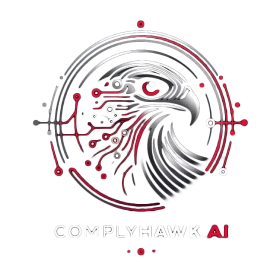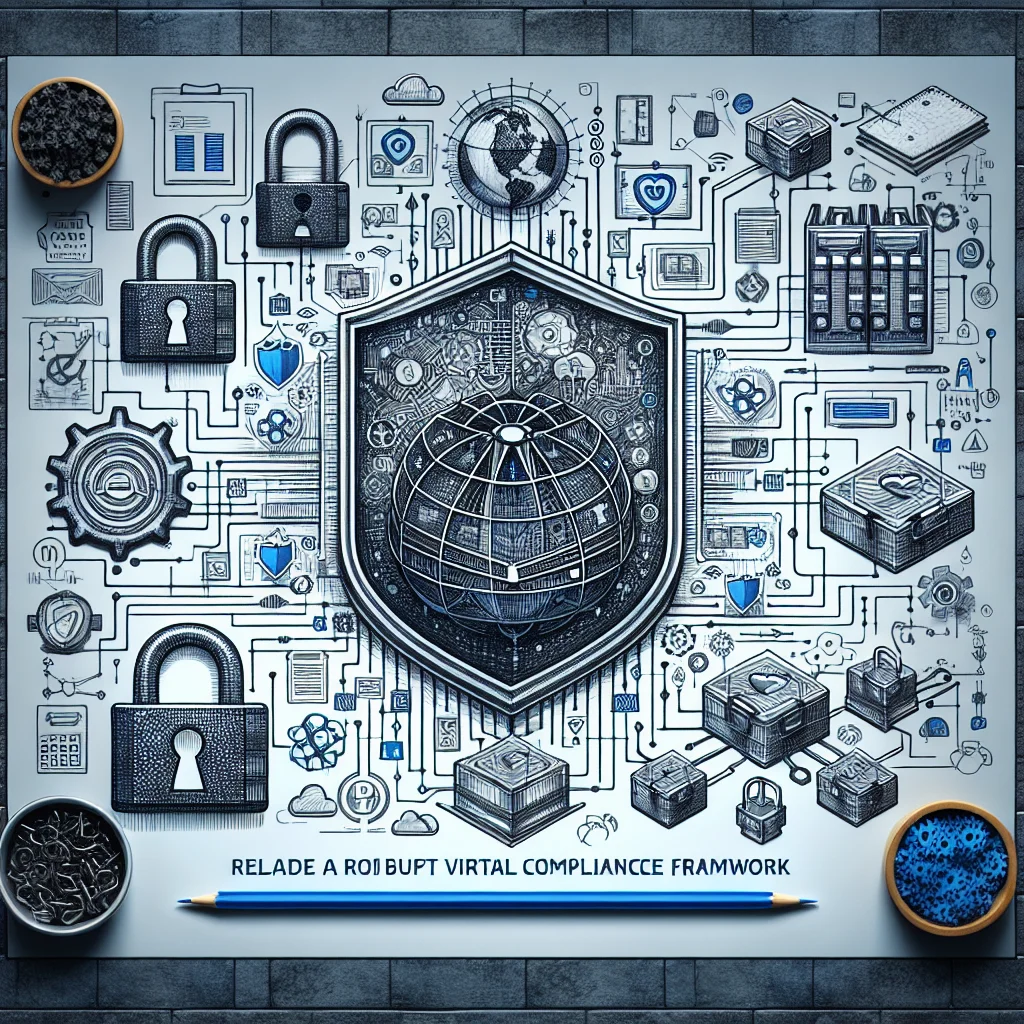Introduction
The European Union’s Revised Payment Services Directive (PSD2) has been a game changer for the financial sector, drastically altering the landscape for payment service providers. Originally enacted in 2015 and taking full effect in 2019, PSD2 aims to increase competition, innovation, and transparency across the European payments market. But what does this mean for CISOs and IT professionals, particularly those based in the Middle East who may be dealing with European clients or expanding into European markets?
This comprehensive guide will address frequently asked questions (FAQs) about PSD2, highlight its relevance to the Middle East, and explore common controls that overlap with other frameworks like ISO 27001 and PCI DSS.
What is PSD2?
PSD2 is a legislative framework implemented by the European Union to regulate payment services and payment service providers throughout the EU and the European Economic Area (EEA). It promotes innovation, increases security, and ensures a level playing field for financial institutions.
Key Objectives
- Enhance Security: Implement stronger authentication measures.
- Encourage Competition: Open banking platforms allow third-party providers to offer new services.
- Increase Transparency: Provide clear information about fees and exchange rates.
Who Needs to Comply with PSD2?
Any organization that processes payments within the EU, or interacts with EU-based clients, must comply with PSD2. This includes:
- Banks
- Payment Institutions
- Third-Party Providers (TPPs)
- E-Money Institutions
Frequently Asked Questions (FAQs)
1. What are the main components of PSD2?
- Strong Customer Authentication (SCA): Requires multi-factor authentication for electronic payments.
- Open Banking API: Allows third-party providers to access bank data with customer consent.
- Liability and Refund Rights: Defines liability for unauthorized transactions and sets guidelines for refunds.
2. What is Strong Customer Authentication (SCA)?
SCA mandates multi-factor authentication to enhance the security of electronic payments. It typically involves two out of three factors:
- Something you know (password)
- Something you have (smartphone)
- Something you are (biometrics)
3. How does PSD2 impact data security?
PSD2 requires comprehensive data protection measures, including encryption, secure APIs, and robust access controls. Compliance with GDPR is also essential.
4. Can Middle Eastern companies be affected by PSD2?
Yes. Middle Eastern companies interacting with EU customers or expanding into the EU market must comply with PSD2 requirements.
5. What are Third-Party Providers (TPPs)?
TPPs are entities authorized to provide account information and payment initiation services, such as fintech startups offering innovative financial solutions.
6. How can compliance be automated?
An Automated compliance platform such as ComplyHawk can streamline processes by continuously monitoring systems, generating audit reports, and ensuring updated regulations.
7. What are the penalties for non-compliance?
Non-compliance can result in significant fines, reputational damage, and restricted access to the EU market.
8. How does PSD2 interact with GDPR?
Both PSD2 and GDPR emphasize data security and protection. PSD2 requires secure handling of payment data, while GDPR mandates the protection of personal data.
9. What is an Account Information Service Provider (AISP)?
AISPs retrieve account data from financial institutions to offer insights into a user’s financial status. They operate under stringent security measures to protect user data.
10. What is a Payment Initiation Service Provider (PISP)?
PISPs initiate payments directly from user accounts, bypassing traditional bank interfaces. This enables faster and potentially cheaper transactions.
11. Are there exemptions to SCA?
Certain low-risk transactions, such as contactless payments under a specified limit or recurring payments, may be exempt from SCA under specific conditions.
12. How does PSD2 affect cross-border payments?
PSD2 standardizes cross-border payments within the EU, making them faster, cheaper, and more transparent.
13. Can existing payment systems be integrated with PSD2?
Yes. However, integration may require updates to security protocols and API standards to comply with PSD2 requirements.
14. What are the reporting requirements under PSD2?
Financial institutions must report security incidents, transaction data, and compliance status to relevant regulatory authorities.
15. How does PSD2 impact transaction fees?
PSD2 promotes transparency, requiring financial institutions to disclose all fees upfront, minimizing hidden charges.
16. What are the benefits of open banking under PSD2?
Open banking fosters innovation, enabling third-party providers to offer new financial services, improving customer choice and competition.
17. How do you ensure continuous compliance with PSD2?
Automated compliance platforms can provide real-time monitoring, regular updates, and automated reporting to ensure ongoing adherence to PSD2 regulations.
18. Are there any specific considerations for the Middle East?
Middle Eastern companies must understand the nuances of European regulatory frameworks and ensure their systems are compatible with PSD2 requirements. Partnering with local experts or automated compliance platforms can facilitate this process.
19. What are the key dates for PSD2 implementation?
- January 13, 2018: Initial implementation date.
- September 14, 2019: Enforcement of Strong Customer Authentication (SCA) and Regulatory Technical Standards (RTS).
20. How do you prepare for a PSD2 audit?
Conduct regular internal audits, utilize automated compliance tools, and maintain detailed records of all compliance activities to prepare for external audits.
21. What is the difference between AISPs and PISPs?
AISPs focus on collecting and analyzing account information from banks to provide customers with insights into their financial situations, while PISPs facilitate the initiation of payments directly from the payer’s bank account to the merchant without the need for traditional bank transfer methods.
22. How does PSD2 influence consumer trust?
By introducing enhanced security measures and greater transparency in fees and transactions, PSD2 aims to increase consumer trust in digital financial services, making users feel more secure when sharing their financial data with third-party providers.
23. What steps should financial institutions take to ensure compliance?
Financial institutions should conduct risk assessments, implement required security measures such as multi-factor authentication, train staff on compliance protocols, and engage with legal experts to navigate the regulatory landscape effectively.
24. What are the implications of PSD2 for app developers?
App developers need to ensure their applications comply with PSD2 regulations, including integrating secure APIs and providing a seamless user experience that maintains customer data privacy and security.
25. Can consumers revoke consent given to TPPs?
Yes, consumers have the right to revoke their consent to share data with Third-Party Providers at any time, effectively halting access to their financial information and services connected to that consent.
26. What is Strong Customer Authentication (SCA)?
Strong Customer Authentication (SCA) is a requirement under PSD2 that mandates the use of two or more independent factors for customer verification during electronic payments. This could include a combination of something the customer knows (password), something they have (smartphone), or something they are (biometric data).
27. What types of transactions are affected by PSD2?
PSD2 applies to a wide range of electronic payment transactions, including online purchases, money transfers, and recurring payments initiated through third-party services. It aims to enhance security across all these transaction types.
28. Are small businesses impacted by PSD2?
Yes, small businesses that handle electronic transactions or interact with EU customers must comply with PSD2 regulations. This may include implementing new security measures and adapting their payment systems.
29. How can consumers benefit from PSD2?
Consumers can benefit from PSD2 through improved choice and better services in financial products, greater transparency regarding fees and transactions, and enhanced security measures that protect their financial data.
30. What role does API play in PSD2?
APIs (Application Programming Interfaces) are essential for PSD2 as they facilitate secure access to financial data between banks and third-party providers. Compliance with specific API standards is necessary to ensure the secure exchange of information and services.
31. What should companies do if they fail to comply with PSD2?
Failure to comply with PSD2 can result in significant fines and penalties from regulatory authorities. Companies should immediately conduct a compliance review, rectify any identified issues, and implement corrective measures to prevent future occurrences.
32. How does PSD2 affect international payment providers?
International payment providers must adapt their services to comply with PSD2 regulations, ensuring they meet the same standards of security and transparency required for transactions involving EU customers.
33. What consumer rights are strengthened under PSD2?
PSD2 strengthens consumer rights by requiring clearer disclosures of fees, greater control over personal financial data, and enhanced protections against fraud, thus promoting a safer financial environment.
34. How can consumers verify if a Third-Party Provider is PSD2 compliant?
Consumers can check if a TPP is PSD2 compliant by looking for their registration with the relevant regulatory authority, as well as verifying that they have the necessary licenses to operate within the EU.
35. Will PSD2 affect fees for consumers?
While PSD2 aims to promote transparency and competition among financial service providers, there might be changes in fees. In some cases, consumers may see reduced fees due to increased competition, while others might experience slight variances in costs related to enhanced services.
How to get started in complying with PSD2?
- Gap Analysis – Conduct a thorough assessment of current systems and processes to identify compliance gaps.
- Project Team -Establish a project team dedicated to overseeing compliance efforts, including IT, legal, and risk management stakeholders.
- Develop a clear understanding of regulatory requirements, including Strong Customer Authentication (SCA) and data protection measures.
- Collaborate with third-party vendors to integrate compliant APIs.
- Implement regular training and awareness programs for employees to foster a culture of compliance.
- Monitor and update compliance strategies as regulations evolve and new technologies emerge.
Common Controls Between Frameworks
A comprehensive understanding of overlapping controls between different compliance frameworks can simplify the implementation process. Below are some common controls between PSD2, ISO 27001, and PCI DSS:
ISO 27001
- A.10.1.1 – Cryptographic Controls
- A.12.4.1 – Event Logging
- A.9.2.3 – Management of Privileged Access Rights
PCI DSS
- Requirement 1 – Install and maintain a firewall configuration to protect cardholder data.
- Requirement 2 – Do not use vendor-supplied defaults for system passwords and other security parameters.
- Requirement 3 – Protect stored cardholder data
- Requirement 4 – Encrypt transmission of cardholder data across open and public networks.
- Requirement 6 – Develop and maintain secure systems and applications to protect against vulnerabilities.
- Requirement 8 – Identify and authenticate access to system components
- Requirement 10 – Track and monitor all access to network resources and cardholder data
Implementing these common controls can help organizations streamline their compliance efforts while reinforcing the security of financial transactions and consumer data management.
Common Controls Between PSD2 and SAMA
Both the Payment Services Directive 2 (PSD2) and the Saudi Arabian Monetary Authority (SAMA) regulation frameworks share several key controls that promote compliance with security and regulatory requirements. This alignment facilitates a more efficient approach to meeting these standards. Below are some common controls relevant to both PSD2 and SAMA:
Common Controls
- Control 1 – Risk Management Framework: Establish a comprehensive risk management framework that identifies, assesses, and mitigates risks associated with financial transactions and services.
- Control 2 – Data Protection: Implement strong data protection measures to ensure the confidentiality, integrity, and availability of sensitive information, aligning with both PSD2 and SAMA guidelines.
- Control 3 – Incident Response Plan: Develop an incident response plan that outlines procedures for identifying, responding to, and recovering from security incidents affecting financial systems.
- Control 4 – User Access Management: Enforce strict user access controls to ensure that access to systems is limited to authorized personnel only, including procedures for managing privileged access rights.
- Control 5 – Continuous Monitoring: Integrate continuous monitoring practices to detect and respond to anomalies in system activities in real-time, enhancing overall security posture.
Focusing on these common controls allows organizations to meet the requirements of both PSD2 and SAMA while strengthening their defenses against potential threats in the financial landscape.
Conclusion
PSD2 represents a significant shift in how financial transactions are conducted and regulated within the EU. For businesses in the Middle East, understanding and complying with PSD2 is crucial, especially if they engage with European customers or aim to enter the European market.
If you’re a CISO or IT professional looking to streamline your compliance efforts and enhance your organization’s cybersecurity posture, consider partnering with an automated compliance platform such as ComplyHawk, which specializes in this framework and region. By doing so, you can ensure that your business remains compliant, secure, and competitive in an increasingly interconnected world.



